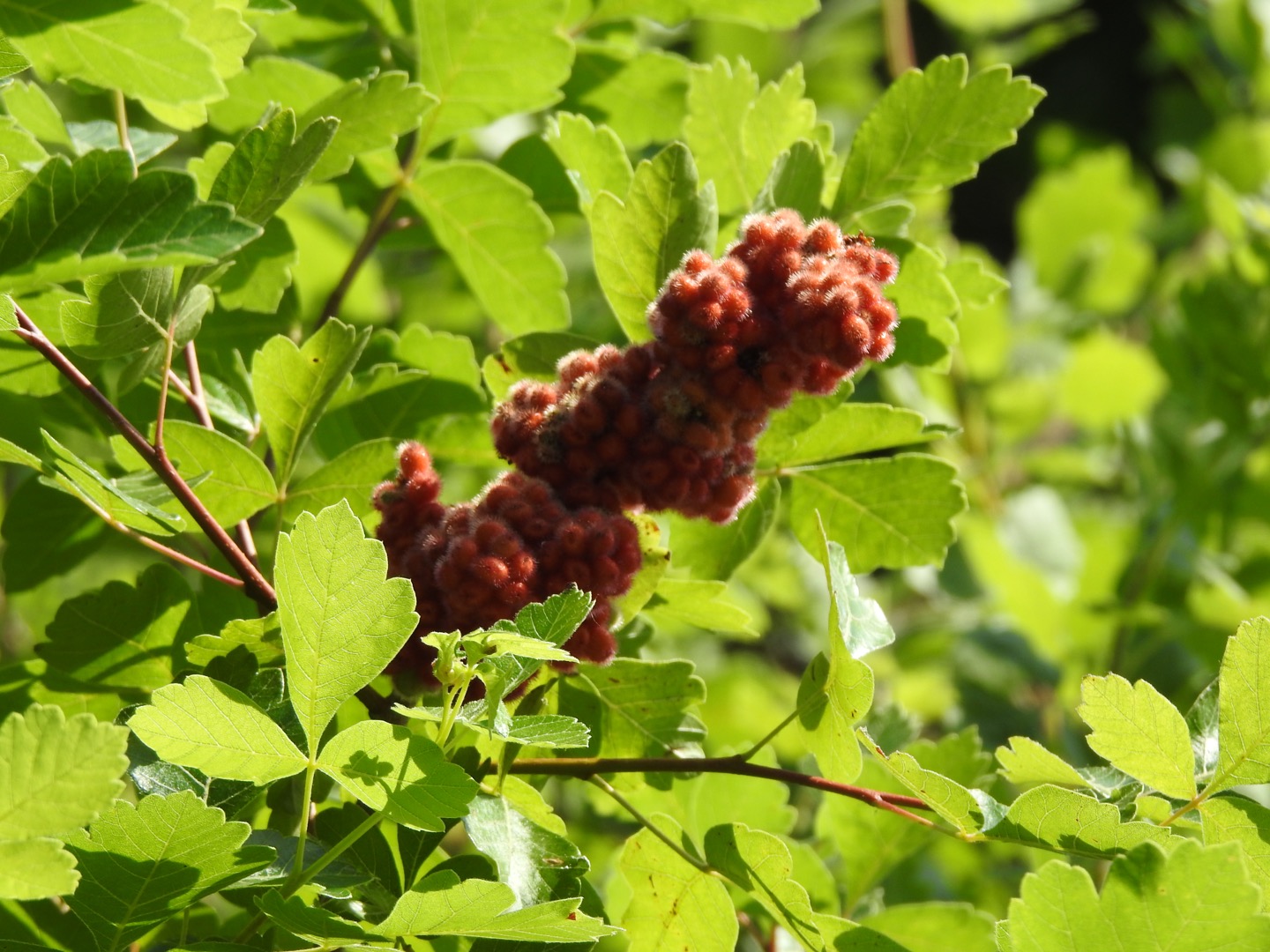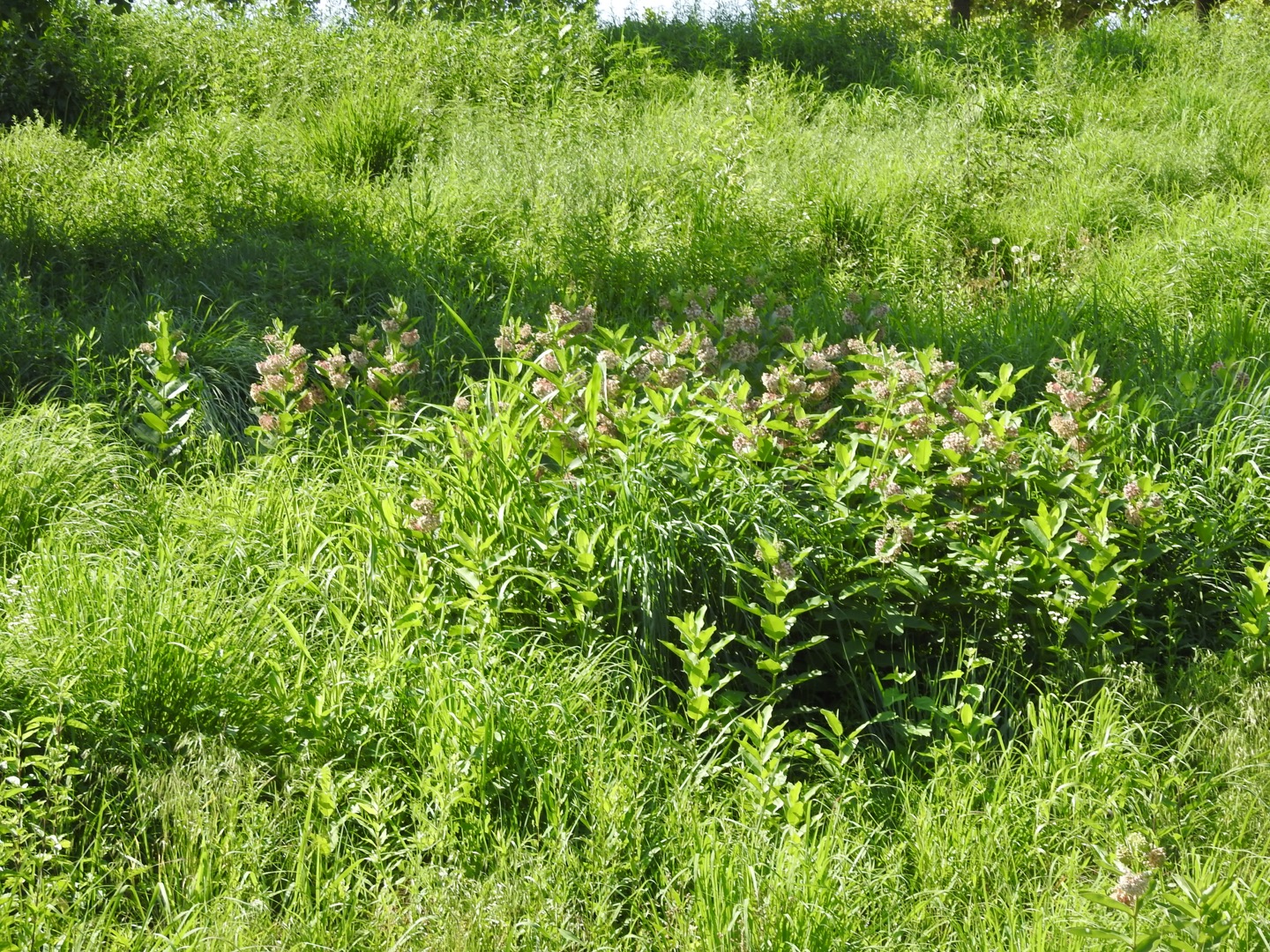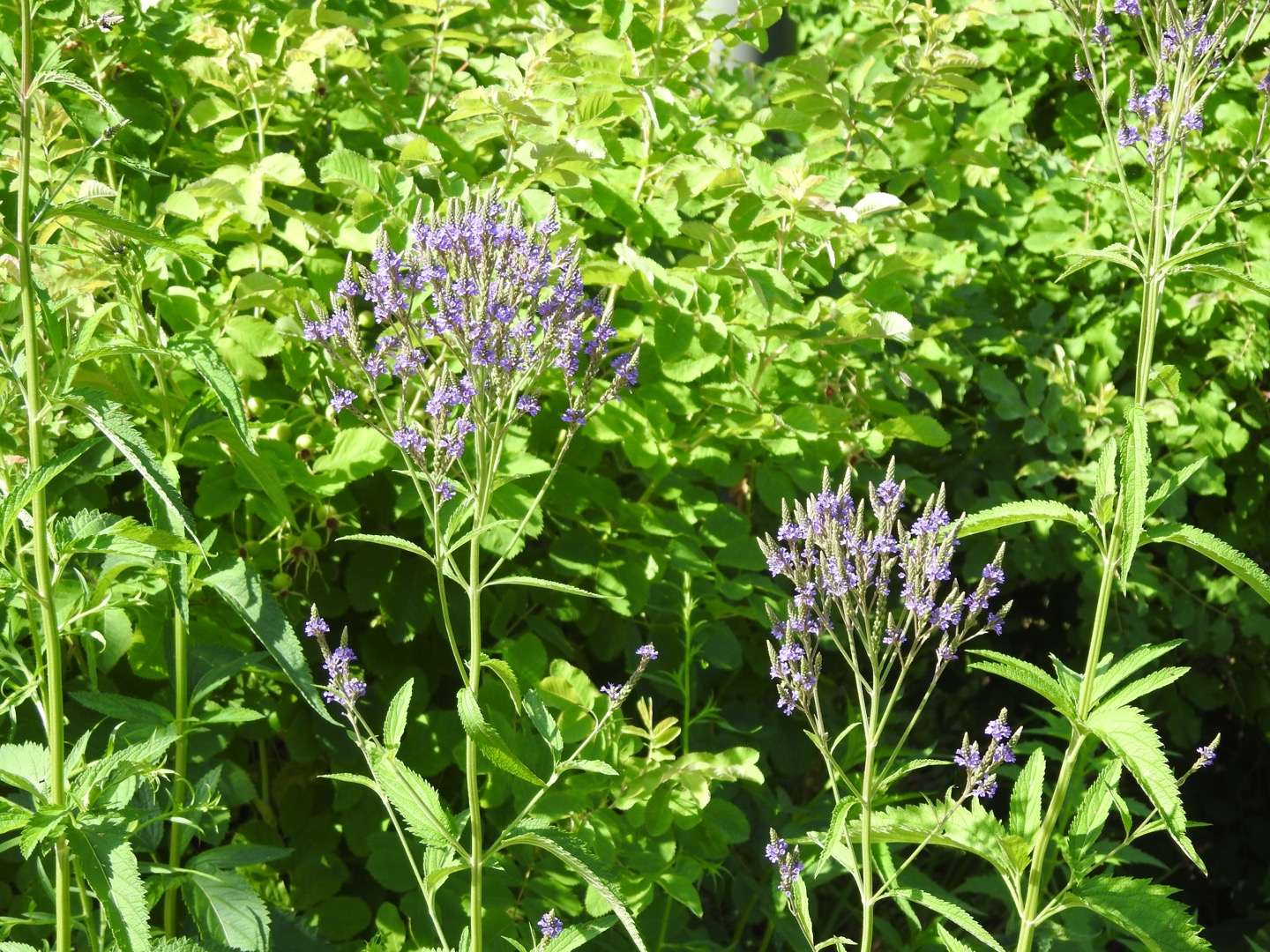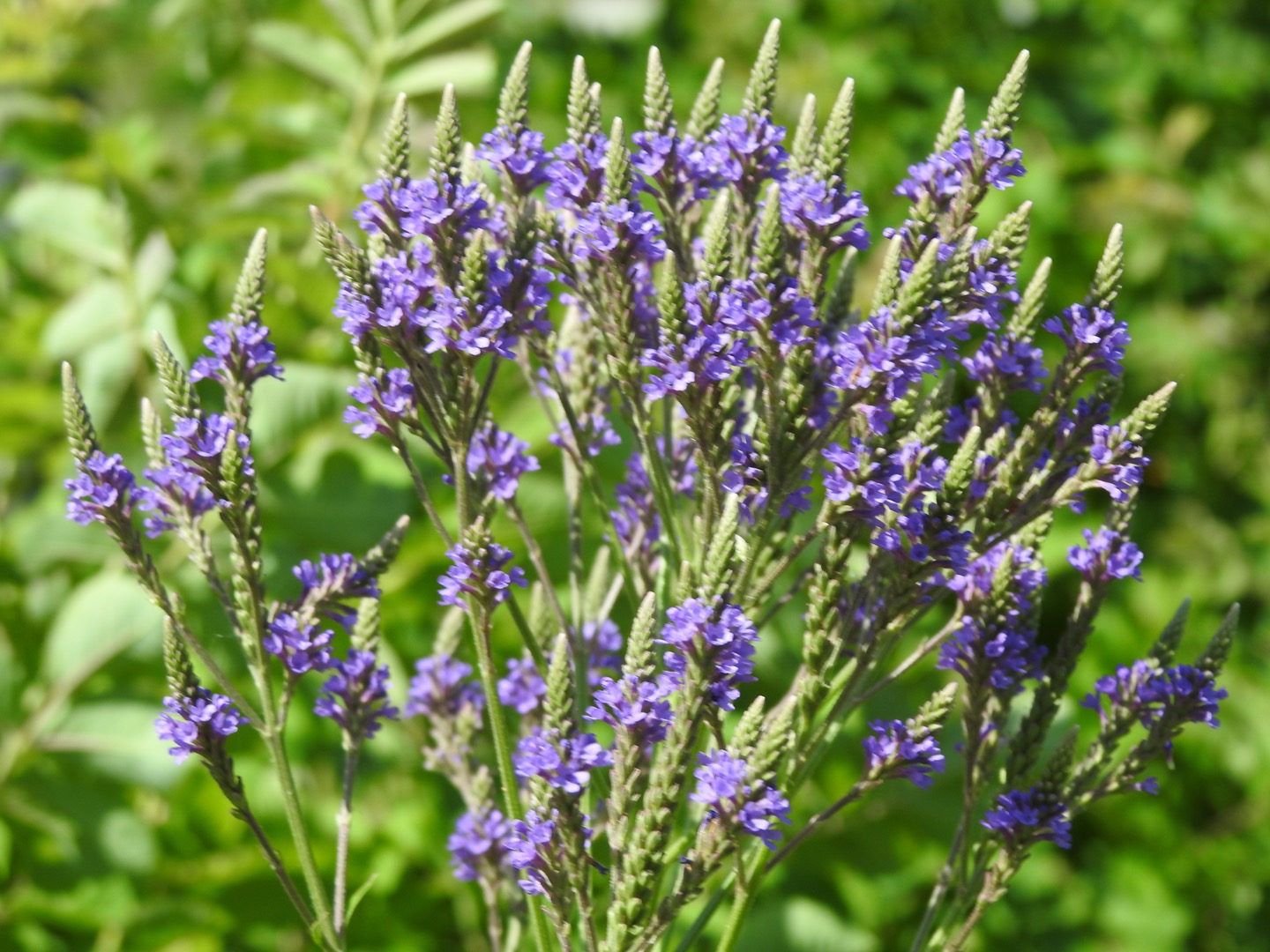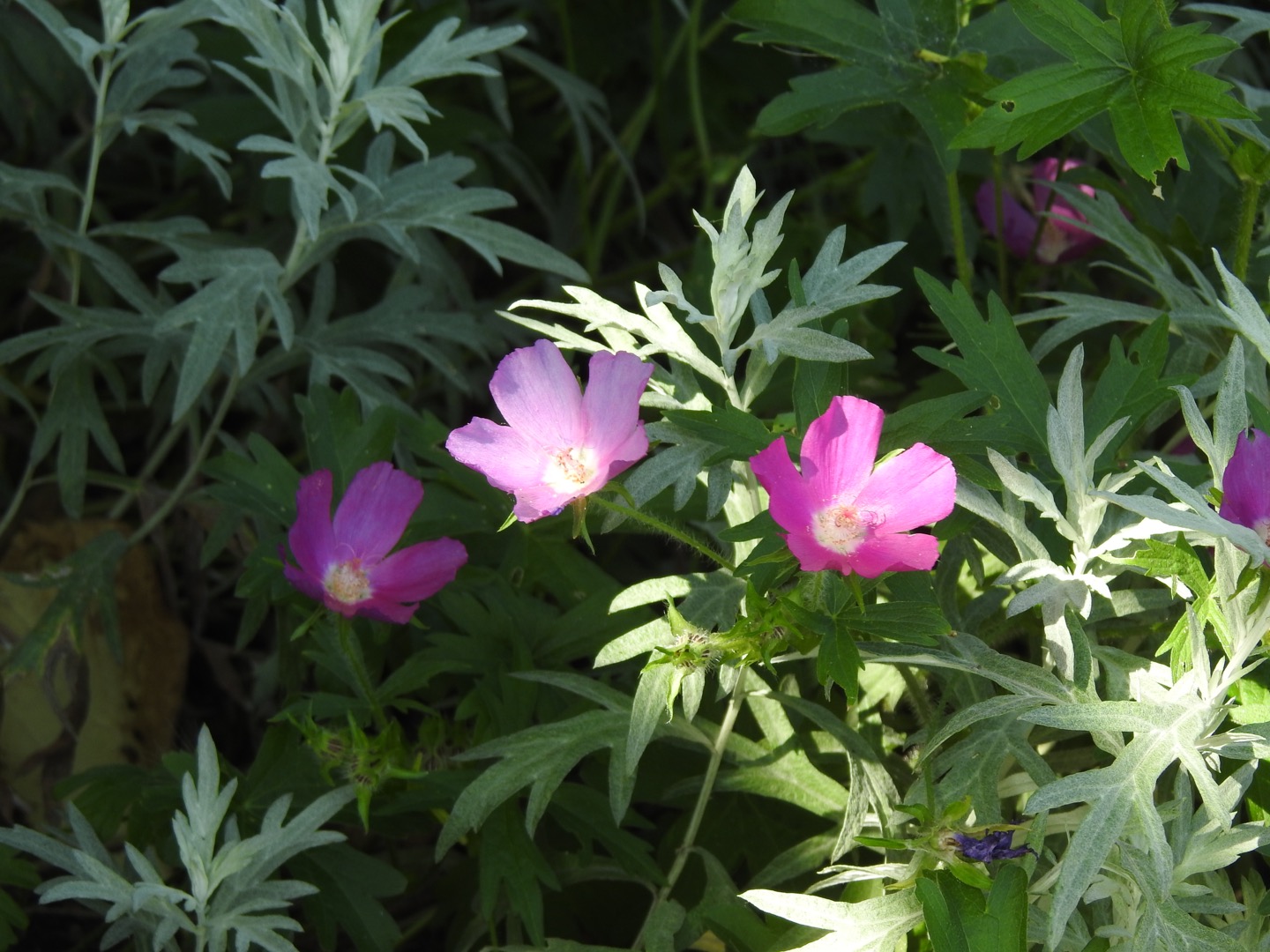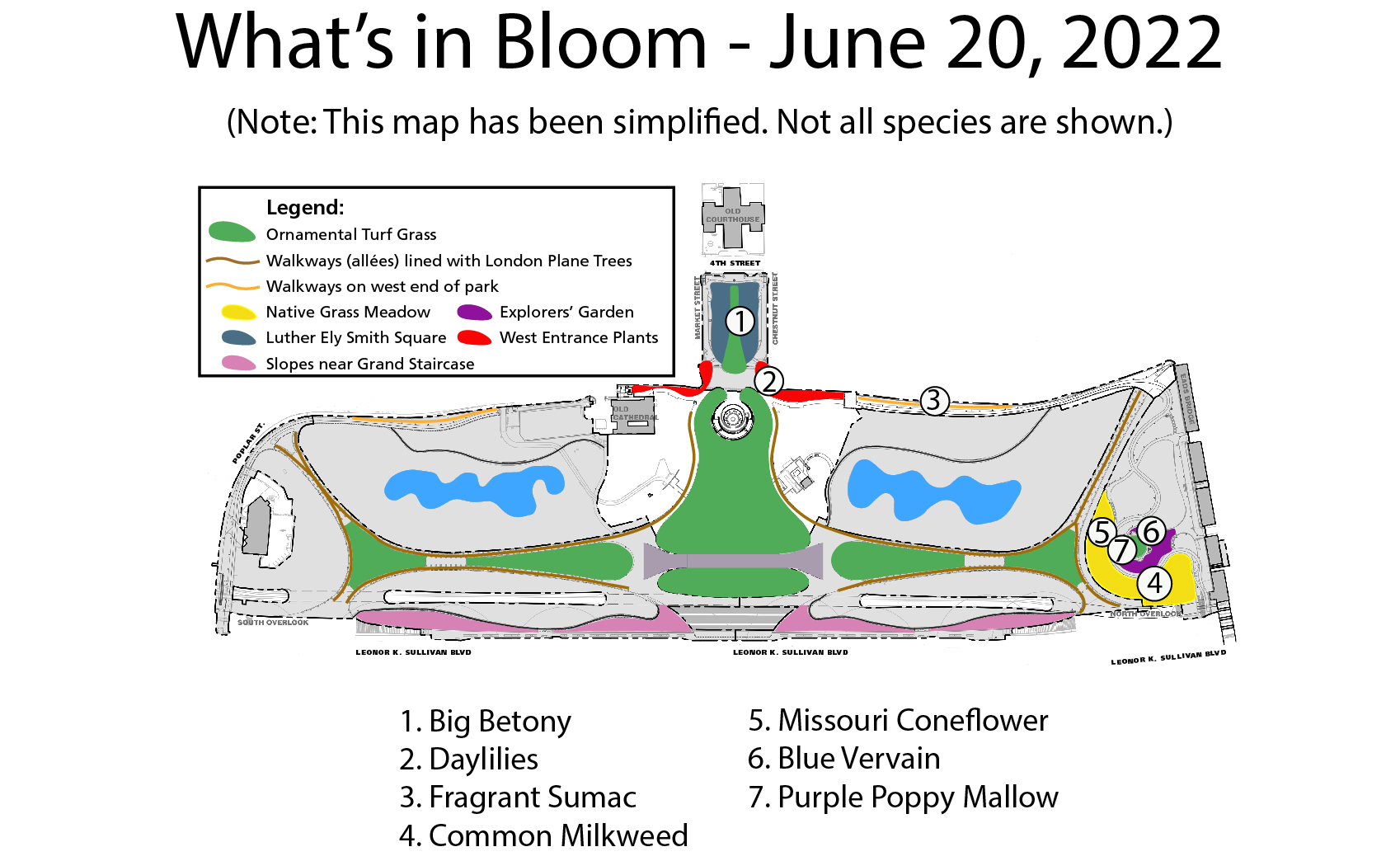
1. Big Betony, Stachys macrantha. Blooming in Luther Ely Smith Square.
There aren't many of these plants growing on the eastern tips of the Luther Ely Smith Square plantings (closest to the Gateway Arch visitor center entrance), but they're so pretty that they're memorable and conspicuous. The Big Betony is a non-native plant - it's native to the Caucus mountains area (Armenia, Azerbaijan, Southern Russia, Georgia) and is actually invasively spreading in parts of Europe. Here in North America it has not been reported invasive, and it is a popular garden specimen.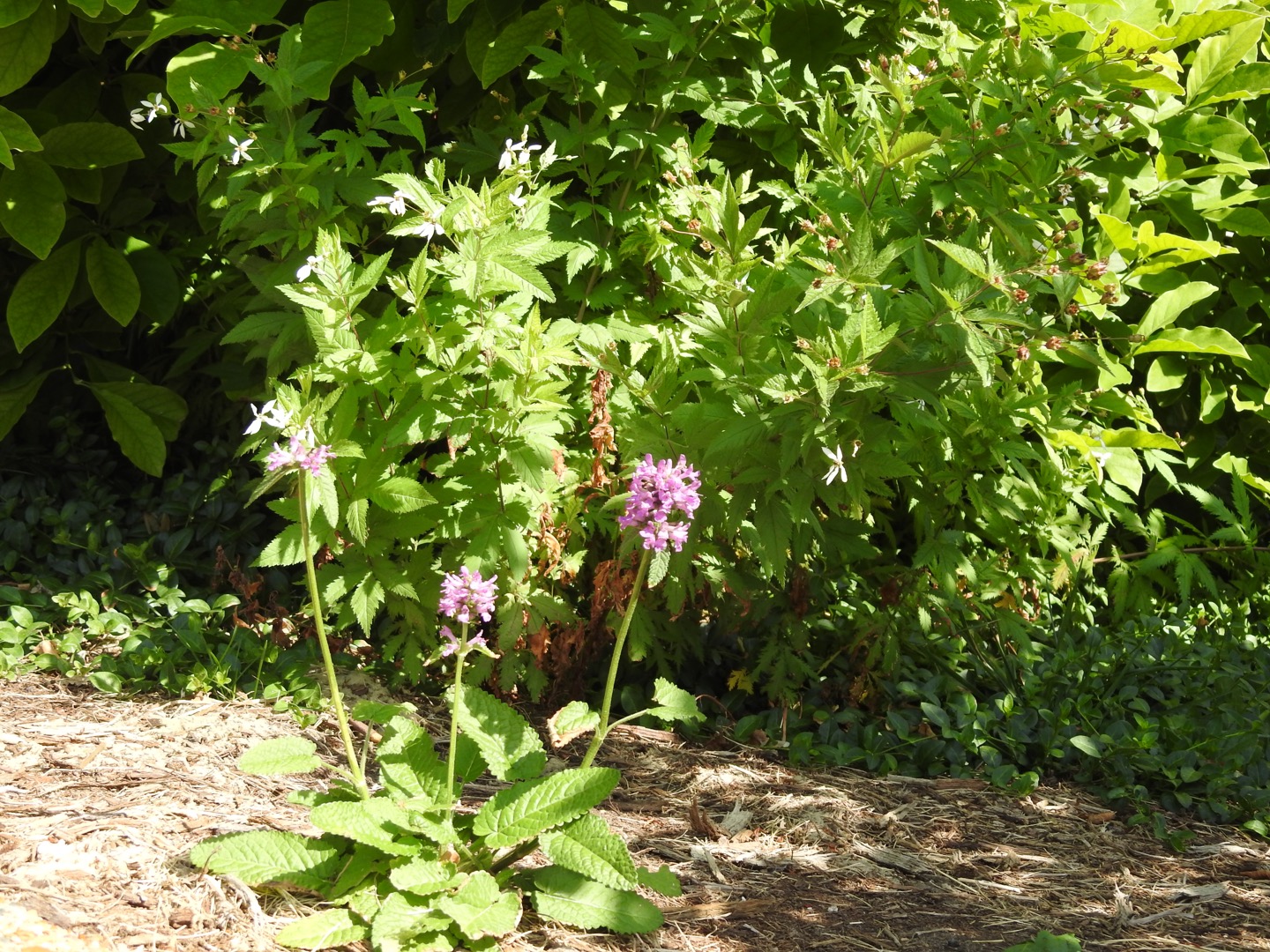 NPS Photo
NPS Photo
2. Daylilies, Hemerocallis species. Blooming near West Entrance.
The "errant lily" mentioned in the past blog was apparently an early bloomer of a much larger planting. Daylilies are easy to grow and come in a dazzling array of colors and forms. They are popular in gardens all over the world. The ancestors of today's daylilies came from China.

3. Fragrant Sumac, Rhus aromatica. Blooming on N and S Memorial walkways.
As you might guess from its name, this plant has a strong smell, but that's not always a good thing: some say that its close relative Skunkbush sumac has a similar scent. The Sumac is not currently blooming, but its large showy fruits are drawing enough interest we decided to highlight it on the blog. Fragrant sumac is found in all the lower 48 states except in the Florida peninsula. It is a deciduous shrub and its leaves turn beautiful colors before dropping in the fall. There are dozens of Sumac bushes of varying sizes planted along the memorial walkways. Just look for the clumps of red fruit that look like the photo below. The fruit will stay on the plant a long time and is an important winter food source for birds.
NPS Photo
4. Common Milkweed, Asclepias syriaca. Blooming in several clumps in the native grass meadow near the Explorers' Garden.
This is a plant very familiar to most midwesterners, since it happily grows in disturbed areas such as lawns and lots. A thick, milky sap drains out of leaves when cut or otherwise damaged. Milkweeds are the larval host plant for Monarch butterflies. Where one milkweed grows, many more tend to follow, since it spreads through underground rhizomes. These milkweed patches, left unchecked, can take up quite a bit of space.
NPS Photo
5. Missouri Coneflower, Rudbekia missouriensis. Blooming in the native grass meadow near the Explorers' Garden.
This is a Missouri native that grows everywhere in the state except the Ozark mountains. In the wild, it can form large, clumping colonies, and here in our gardens it has the same habit. In the photo below, notice the tight clump of coneflowers surrounded by other grasses. It has a long bloom period, so you may be able to visit it for weeks to come. This species's range is confined to only a few states in the midwest and south.
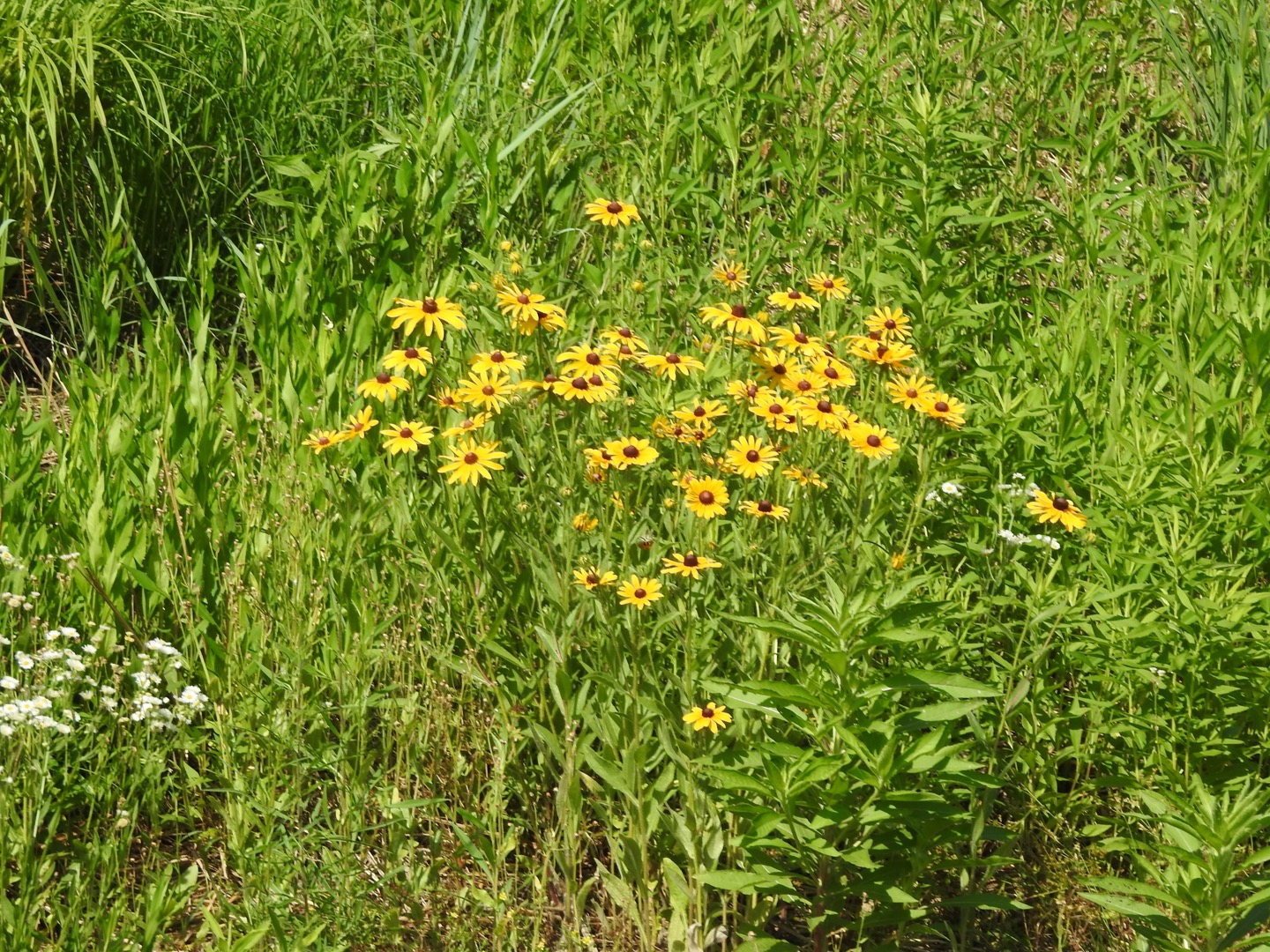
6. Blue Vervain, Verbena hastata. Blooming in the Explorers' Garden.
This species consists of little cones of flowers that bloom slowly from the bottom up. Because of this slow-blooming habit, their flowing period can last months: we expect to see them brightening up the Explorers' Garden until fall. Blue Vervain is native to most of the USA and easily spreads across new areas as long is there is enough moisture. The plant thrives in boggy areas and streambanks. Its genus name is latin for "sacred plant," which is an allusion to its importance as a medicinal plant for centuries.
Both photos NPS.
7. Purple Poppy Mallow, Callirhoe involucrata. Blooming in the Explorers' Garden.
This is a short plant (>6 inches) that tends to sprawl out over a large area. It doesn't usually grow agressively but may sometimes crawl on top of other plants or grasses. Despite this spreading habit, it develops deep taproots and is difficult to transplant once established. It grows throughout prairies in the midwest, Texas, and Utah. The small cup-shaped flowers open in the mornings and close in the evenings. Its deeply lobed leaves are almost as interesting and appealing as the flowers. The species is sometimes called Buffalo Rose.

